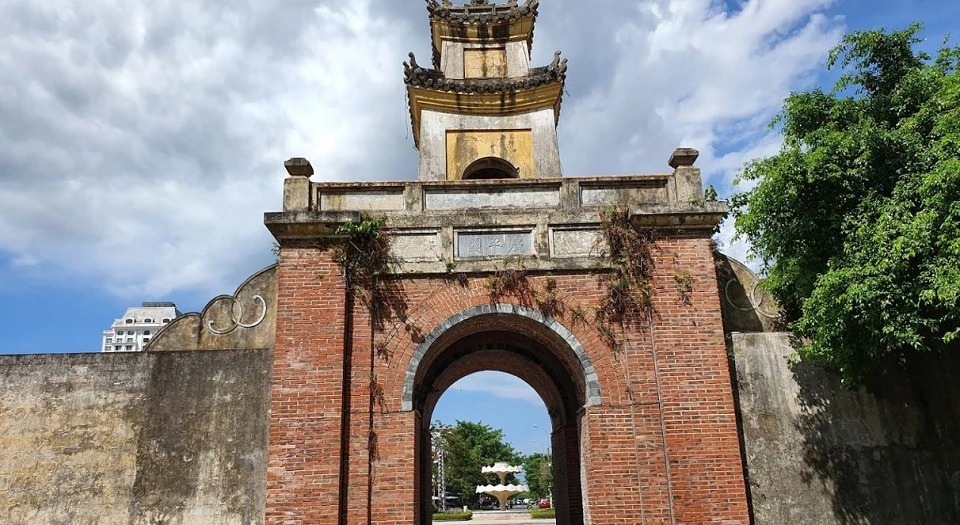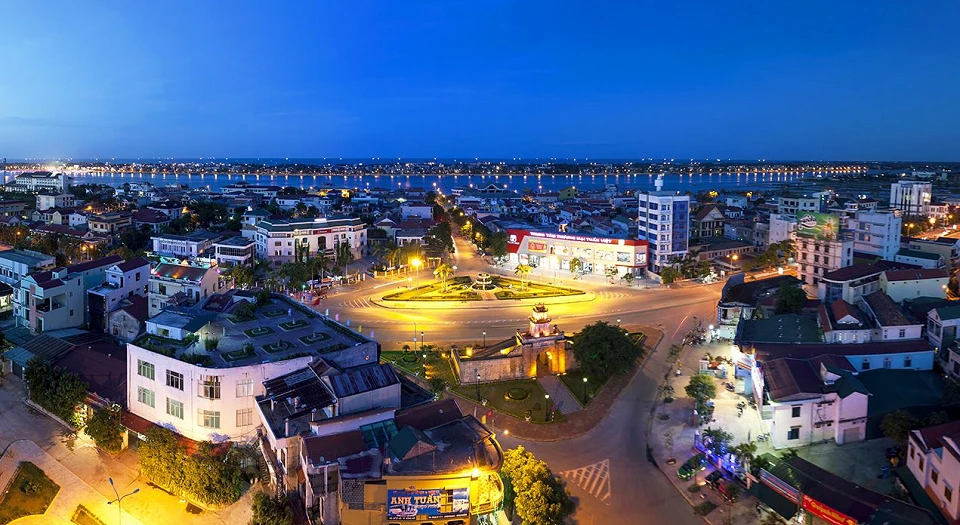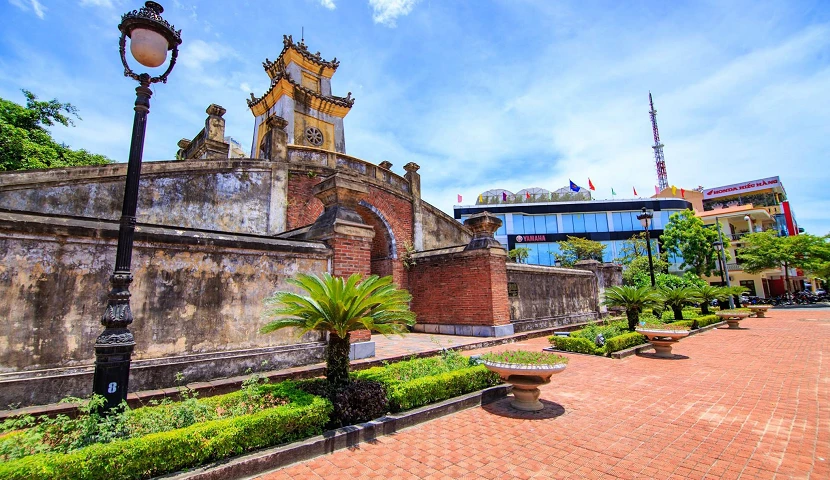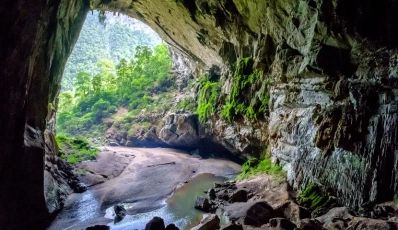Quang Binh is not only famous for Phong Nha Ke Bang, Kieu Cave, Kong Collapse, and Nhat Le Beach but also for valuable historical relics. Among them, the Quang Binh City Gate, built in 1639 by the Nguyen Lord period, is one of the most important and solid strongholds of the Nguyen Lords in Cocincina. After being severely damaged many times, Quang Binh City Gate has been restored almost to its original form as a historical witness in the middle of Dong Hoi City, Quang Binh Province.

The Quang Binh City Gate (the recently restored version) is located in the center of Dong Hai district and is the intersection of 4 roads: Duc Ninh St. in the west, Me Suot St. in the east, Ha Noi St. in the north, and the south is the street to Hue. This building also has many names such as the gateway to Quang Binh Palace or the Cong Binh City Gate.
The City Gate of Quang Binh under the Nguyen Dynasty in 1631 is an ancient rampart system built to protect the Nguyen citadel. It belongs to the Luy Thay Citadel system, including Citadel Luy Truong Duc, Luy Tran Ninh, Luy Nhat Le, and Luy Truong Sa, which stretches more than 30km.

The Luy Thay system was designed by strategist Nguyen Dao Duy Tu (1572-1634) and constructed from 1631 to 1634 to help the Lords of Nguyen in Cocincina resist the Lords of Trinh's attacks during the Trinh-Nguyen Civil War in the 16th century. Thus, this place has a strategic position in protecting the region.
Under the reign of Lords Nguyen, if people wanted to go to Quang Binh Palace by land, they had to go through Quang Binh City Gate to present their documents before entering while those going by water had to stop at Nhat Le Gate and Thu Ngu Gate.
The Quang Binh City Gate is located between the north-south artery of Vietnam and the waterway in the Nhat Le estuary. In fact, the attacks of the Lords of Trinh's army from the north were stopped here 7 times. Being a witness to a bloody period of civil war, the Quang Binh City Gate and the Luy Thay system demonstrated the high development of the architectural art of Vietnam's military fortifications.

Regarded as the center of the Luy Thay system, this city gate is both a durable defensive fortress and a unique architectural work of art. In addition, it is a reliable place for architectural and military researchers in present-day Vietnam.
In 1825, King Minh Mang restored the gate and raised several floors of the watchtower with solid-fired bricks. After the inauguration, the king classified it as one of the special historical and cultural works of national identity.

Before the 1945 August Revolution, the Duc Ninh Street part of the Quang Binh Citadel gate also had a moat outside the citadel, a brick bridge around the moat, and a large cemetery at the intersection of Duc Ninh and Cau Rao Streets.
The City Gate of Quang Binh was destroyed by the French army when they withdrew from Dong Hoi in 1954, then it was rebuilt almost like the original version. In 1965, during the war against the Americans, this building was sabotaged by American planes and then rebuilt again in modern days and became an architectural relic of historical and artistic value, a typical symbol of the culture of the land of geniuses in Quang Binh.

The gate's location is also near other famous tourist attractions in Dong Hoi such as the Me Suot monument, Dong Hoi market, Tam Toa Church relics, and Quang Phu dunes, etc., making it very convenient for your trip to Quang Binh.





















 TRAVELERS' CHOICE 2026
TRAVELERS' CHOICE 2026 


